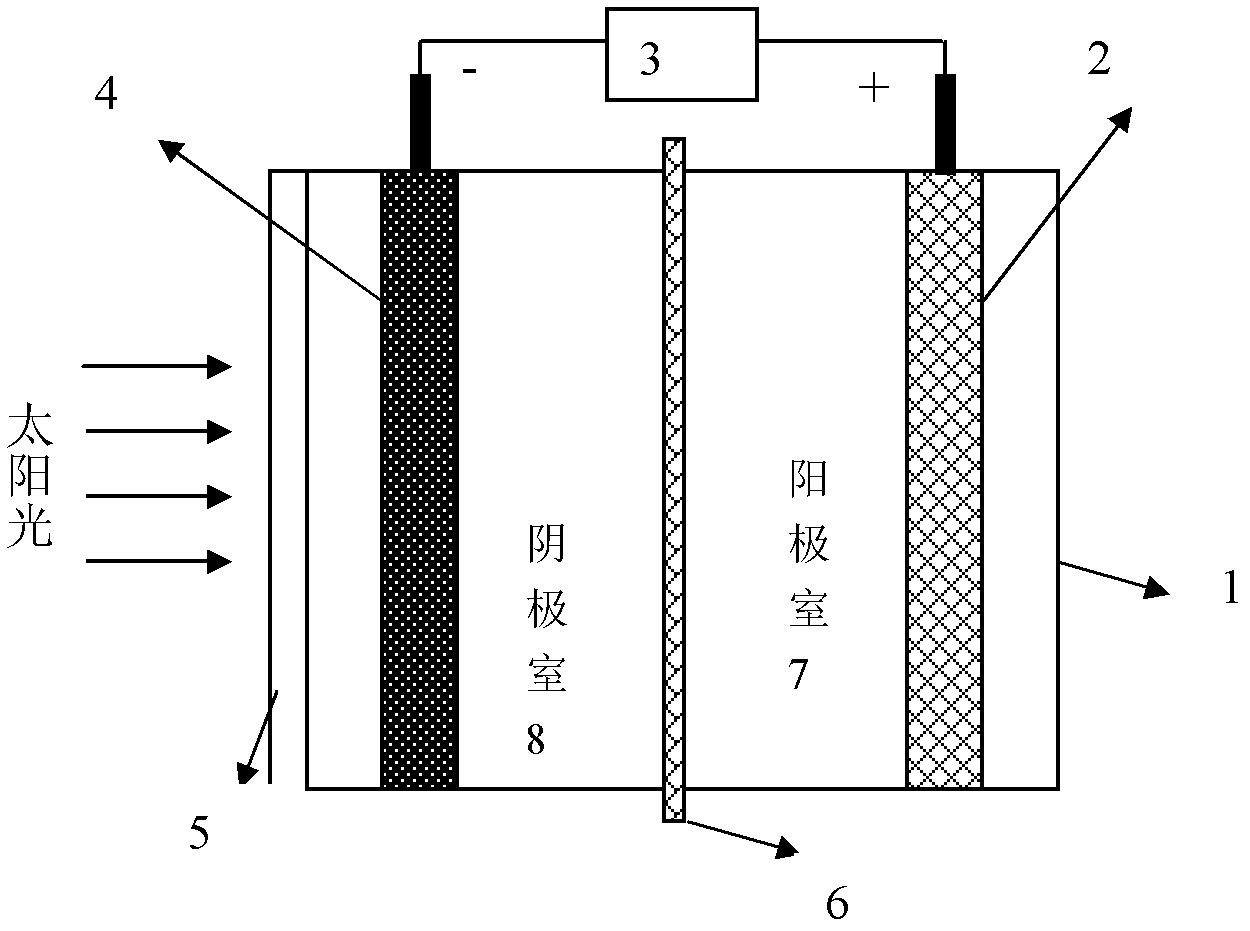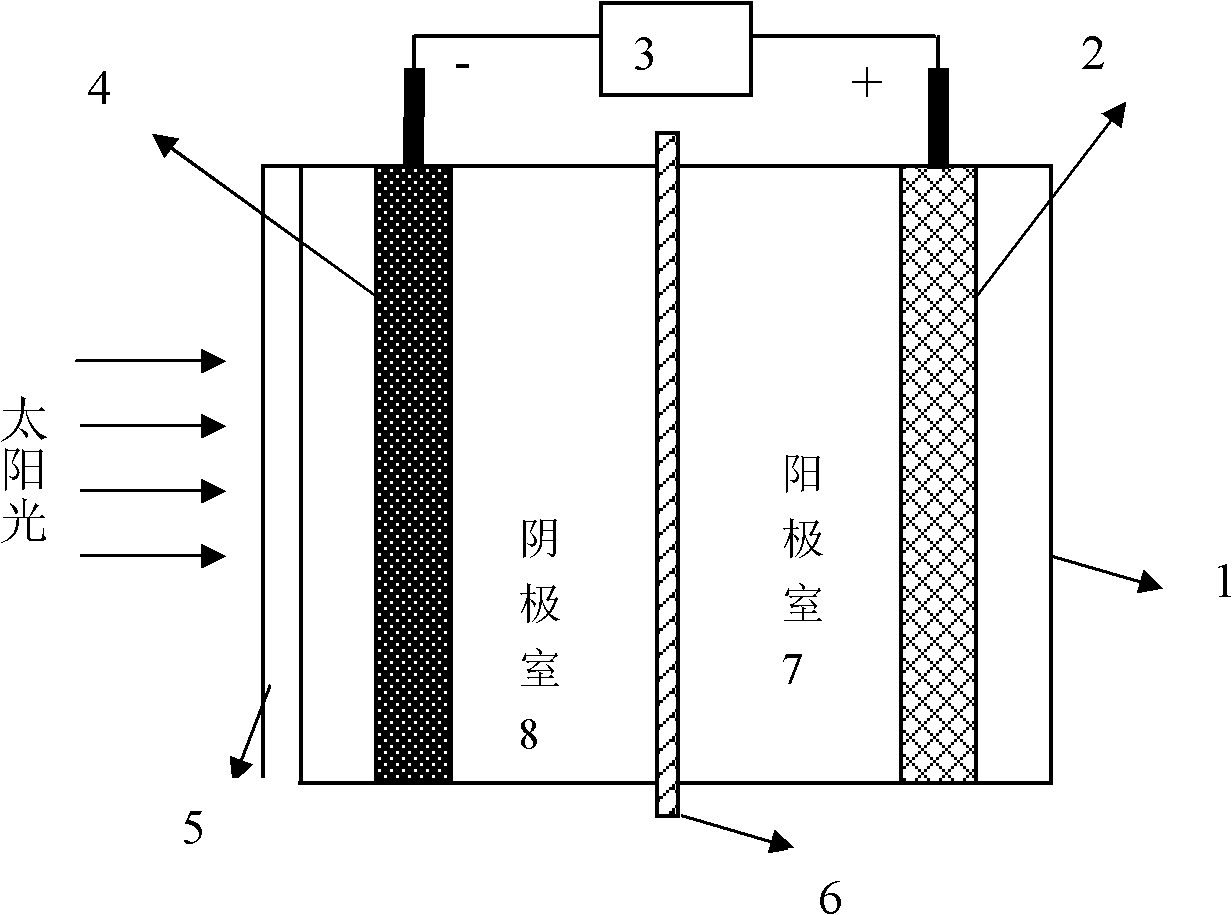Microbial photoelectrochemical system for simultaneously generating electricity and hydrogen and treating sewage
A sewage treatment, photoelectrochemical technology, applied in the direction of biological water/sewage treatment, water/sludge/sewage treatment, energy wastewater treatment, etc., can solve the problems of bias, reaction can not occur spontaneously, and other problems
- Summary
- Abstract
- Description
- Claims
- Application Information
AI Technical Summary
Problems solved by technology
Method used
Image
Examples
Embodiment 1
[0016] Example 1: Use carbon cloth as the anode base, on the carbon cloth, the anode culture method of microbial fuel cell is used to attach electricity-producing microorganisms in advance, and the calcium ferrite deposited on the ITO glass is used as the photocathode, and the electrolytic cell is separated by a cation exchange membrane. It is formed into a cathode chamber and an anode chamber. The anode chamber is cylindrical and leaves a small hole for sampling and testing. The size is 2cm in diameter and 3cm in length. It is filled with about 20mL of waste water containing sodium acetate, and the COD is 1249mg / L; the cathode chamber is also cylindrical. There is a hole in shape for sampling and testing, the size is the same as that of the cathode chamber, except that a quartz glass window is opened on the end face to ensure light irradiation, and it is filled with 0.1M sodium sulfate aqueous solution. The cathode and anode are connected with wires through a 10 ohm resistor. ...
Embodiment 2
[0017] Embodiment 2: Use carbon cloth as the anode substrate, on the carbon cloth adopt the anode culture method of the microbial fuel cell to attach electricity-producing microorganisms in advance, the calcium ferrite deposited on the ITO glass is used as the photocathode, and the electrolytic cell is separated by the cation exchange membrane It is formed into a cathode chamber and an anode chamber. The anode chamber is cylindrical and leaves a small hole for sampling and testing. The size is 2cm in diameter and 3cm in length. It is filled with about 20mL of domestic sewage with a concentration of about 400mg / L COD; the cathode chamber is also cylindrical There is a hole on the top for sampling and testing, the size is the same as that of the cathode chamber, except that a quartz glass window is opened on the end face to ensure light irradiation, and it is filled with 0.1M sodium sulfate aqueous solution. The cathode and anode are connected with wires through a 5 ohm resistor....
PUM
 Login to View More
Login to View More Abstract
Description
Claims
Application Information
 Login to View More
Login to View More - R&D
- Intellectual Property
- Life Sciences
- Materials
- Tech Scout
- Unparalleled Data Quality
- Higher Quality Content
- 60% Fewer Hallucinations
Browse by: Latest US Patents, China's latest patents, Technical Efficacy Thesaurus, Application Domain, Technology Topic, Popular Technical Reports.
© 2025 PatSnap. All rights reserved.Legal|Privacy policy|Modern Slavery Act Transparency Statement|Sitemap|About US| Contact US: help@patsnap.com


